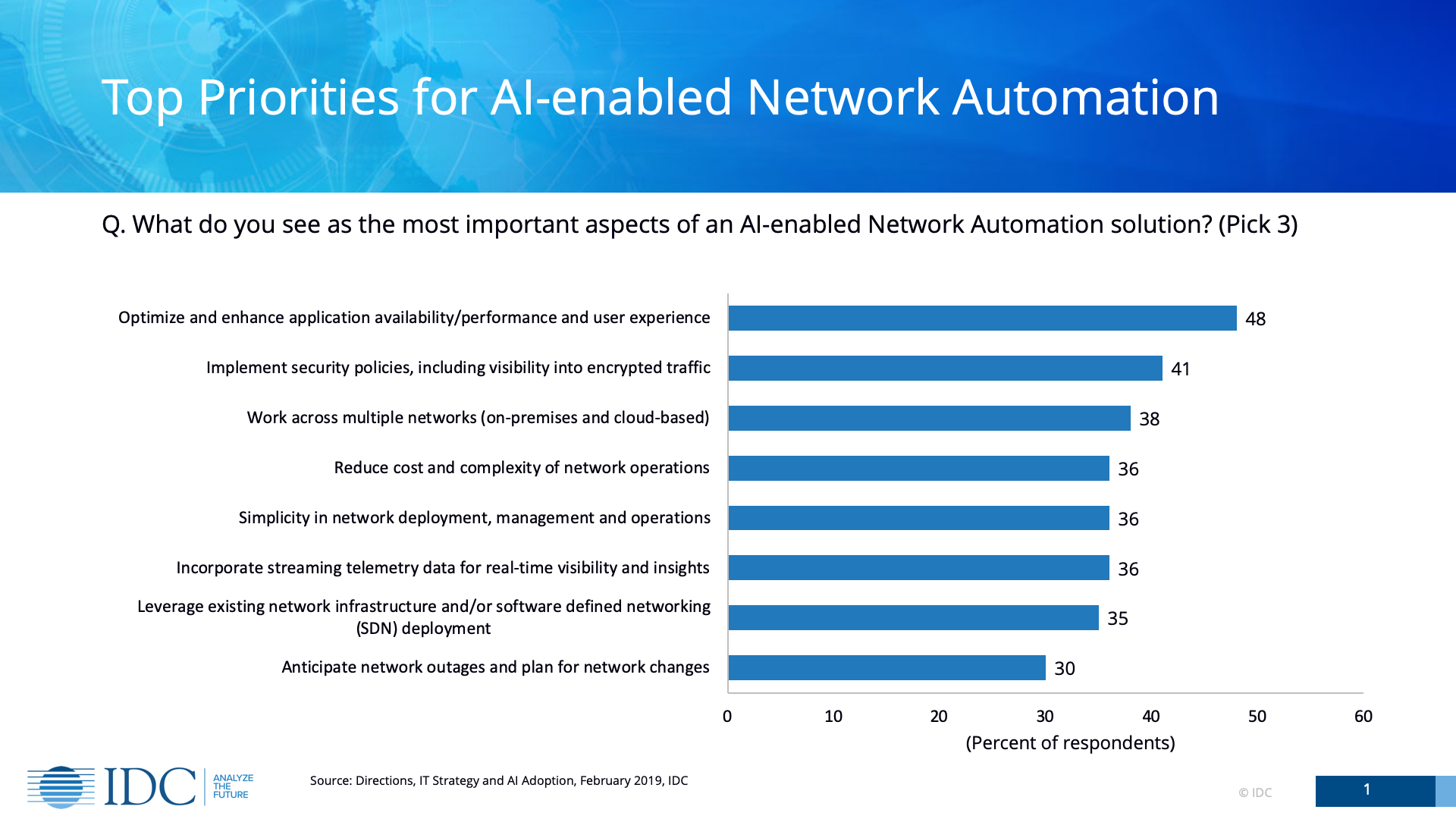Amid the imperative of digital transformation and the enterprise adoption of multicloud, network agility and flexibility are prized. The right network-automation tools can help, contributing to agile operations while enabling the portability of applications and data between on-premises datacenters and clouds.
With the rise of cloud operating models and multicloud environments, there’s no question that network professionals are compelled to forgo manual processes, inherently inefficient and error prone, in deference to automated processes that are more efficient and verifiable. IDC foresees network-automation tools evolving in lockstep with cloud-driven requirements to enable efficient and relevant connectivity of network service/functions within multicloud environments.
Given the nature of multicloud, automation tools should work across a range of cloud services from different cloud service providers. The right automation tool will enable interoperability in a hybrid and multicloud architecture, while removing application and data portability constraints between clouds and on-premises datacenters. To be sure, IT organizations can address interoperability concerns by utilizing automation tools that integrate seamlessly across a range of environments.
Beyond interoperability, IDC predicts that simple, declarative management models with enhanced verification capabilities and closed-loop processes will be increasingly informed by streaming telemetry and pervasive network visibility, resulting in a growing trust of automated network infrastructure through 2025. This trust will extend from provisioning to AI-assisted Day 2 network operations.
In the cloud era, enterprises perceive considerable value in having AI-enabled network automation. In IDC’s IT Strategy and AI Adoption Survey, conducted earlier this year, respondents cited optimizing and enhancing application availability/performance and user experience as one of the most important aspects of an AI-enabled network automation solution. Also cited frequently was implementing security policies, including visibility into encrypted traffic. Another prominent consideration was the ability to work across multiple networks (on-premises and cloud based), followed by reducing the cost and complexity of network operations and bringing simplicity to network deployment, management, and operations. Equally important was “incorporating streaming telemetry for real-time visibility and insights” (see Figure 2).
These capabilities can help enterprise IT achieve operational consistency and efficiency extending from on-premises datacenters to hybrid and multicloud environments. The value is even greater if these goals can be attained with current staffing capabilities and available resources.
Indeed, enterprises are not only contending with the implications of digital transformation and the accompanying need to effectively harness hybrid IT and multicloud. A compounding factor is they must meet those challenges amid a chronic skills shortage, especially in relation to new technologies and processes. These factors have resulted in increased demand for approaches that mitigate complexity and deliver simplicity. Datacenter networks, now distributed and intrinsically more complex in a multicloud world, must be easier to provision, deploy, and manage.
With the ascendancy of business-critical and distributed applications and workloads, the datacenter network, properly understood, is more important than ever. To support and deliver business outcomes, it must deliver intelligent automation comprehensively across a multicloud landscape. For more information on how the right network-automation tools can enable network agility and flexibility for multicloud, and to learn more about how Cisco’s datacenter-networking portfolio responds to these challenges, I invite you to read my recent IDC white paper, “Networking for the Distributed Multicloud Datacenter.”

Thank you for sharing the great insights on Artificial Intelligence enabled network automation, AI has evolved with the latest trends in the automation sector which produces a lot of jobs, by using the right tools